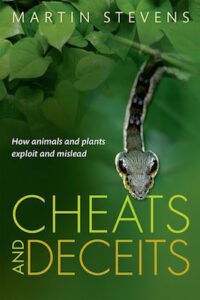 If you’ve studied natural history for very long, you’ve likely by now noticed that a wide variety of plants and animals have the appearance of things much different than what they themselves actually are; caterpillars that look like snakes or hoverflies that look like bees, for example. While it’s fairly obvious that such deceptive traits would be valuable for a range of reasons, how did they come about in the first place? And for that matter, what do such deceptions mean in regard to evolution and adaptation?
If you’ve studied natural history for very long, you’ve likely by now noticed that a wide variety of plants and animals have the appearance of things much different than what they themselves actually are; caterpillars that look like snakes or hoverflies that look like bees, for example. While it’s fairly obvious that such deceptive traits would be valuable for a range of reasons, how did they come about in the first place? And for that matter, what do such deceptions mean in regard to evolution and adaptation?
Such questions form the core of Martin Stevens’ forthcoming book Cheats and Deceits; How Animals and Plants Exploit and Mislead. Stevens, an Associate Professor of Sensory and Evolutionary Ecology based in the Centre for Ecology and Conservation at the University of Exeter, has spent much of his academic career investigating sensory ecology and behaviour, especially animal coloration and vision. Often, his research has included such topics as deception and mimicry, which – quite frankly – would seem to make him one of the most authoritative authors for such a book.
Now all we have to do is wait for April of 2016 to see what he’s written.
If you enjoyed reading this, please consider signing up for The Well-read Naturalist's newsletter. You'll receive a helpful list of recently published reviews, short essays, and notes about books in your e-mail inbox once each fortnight.
